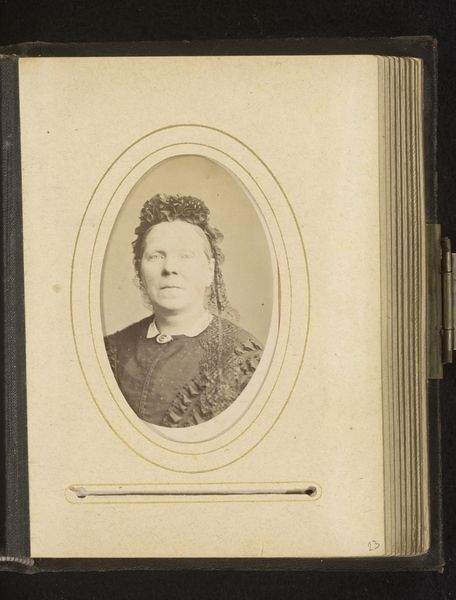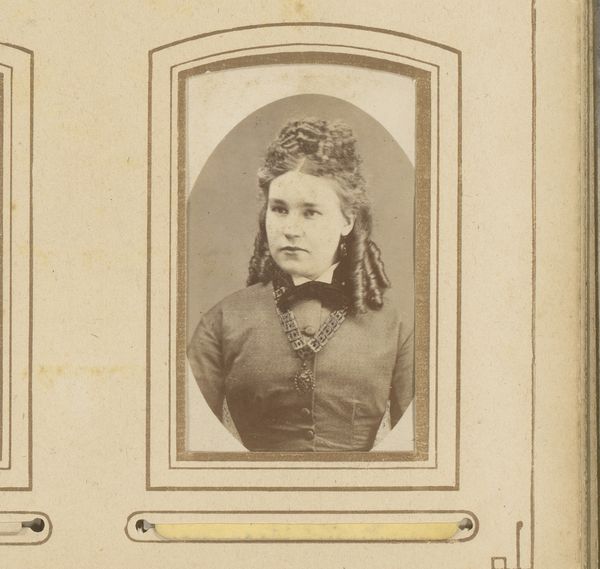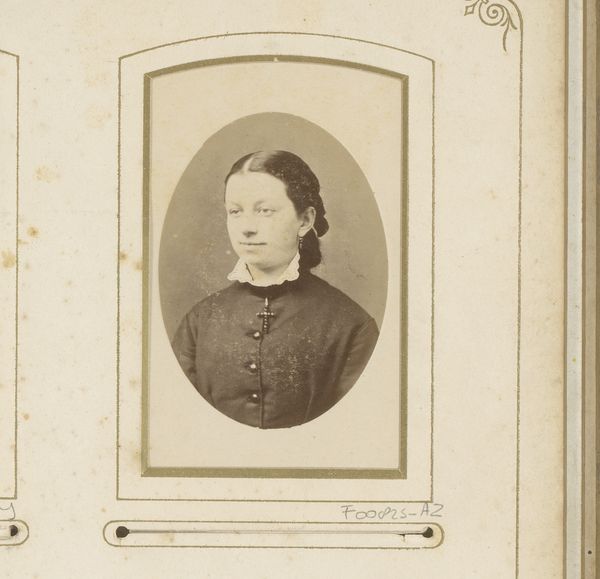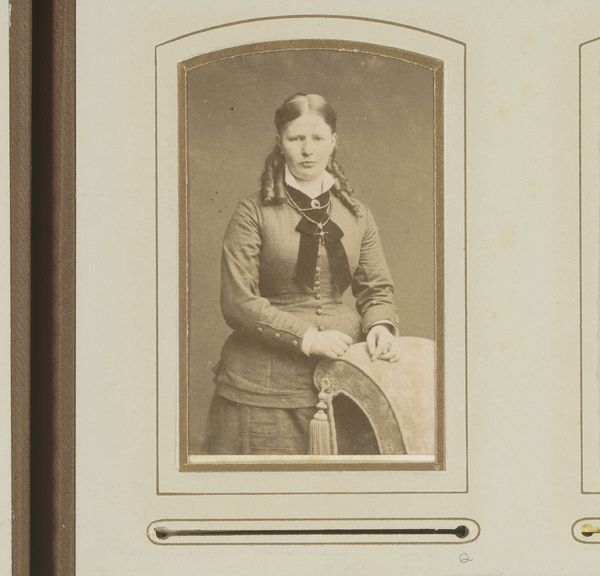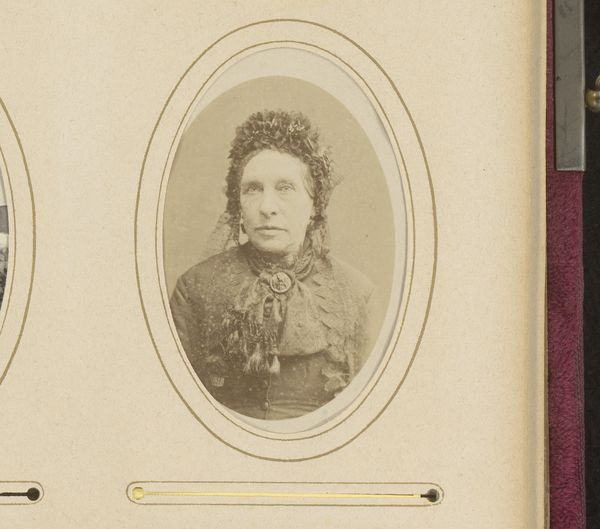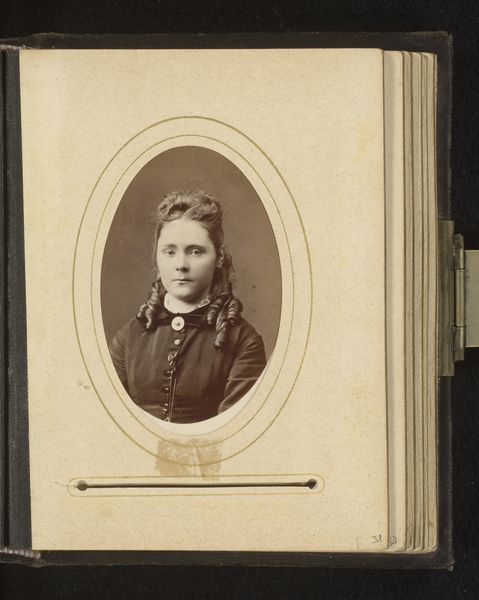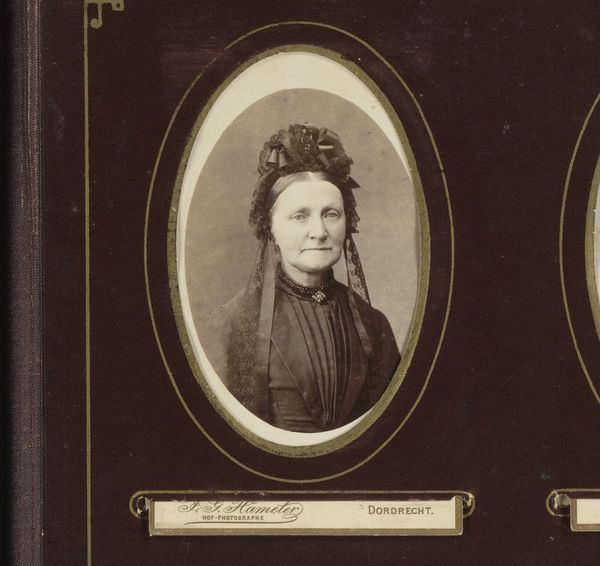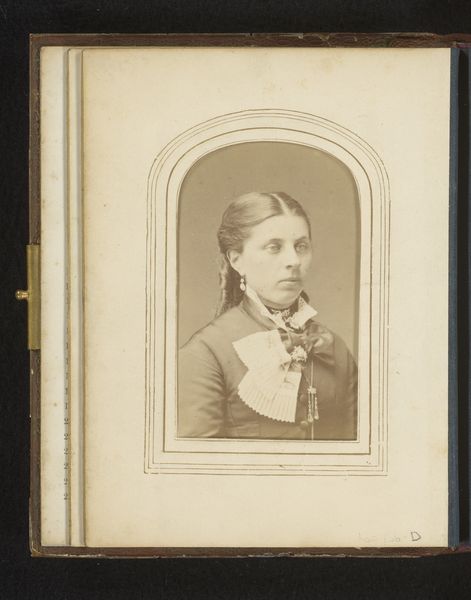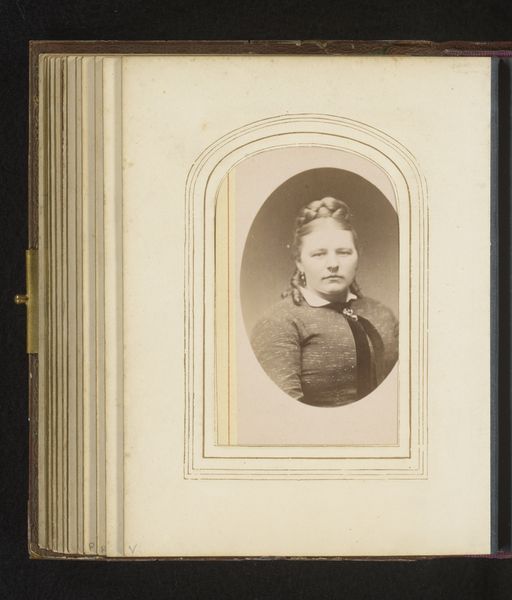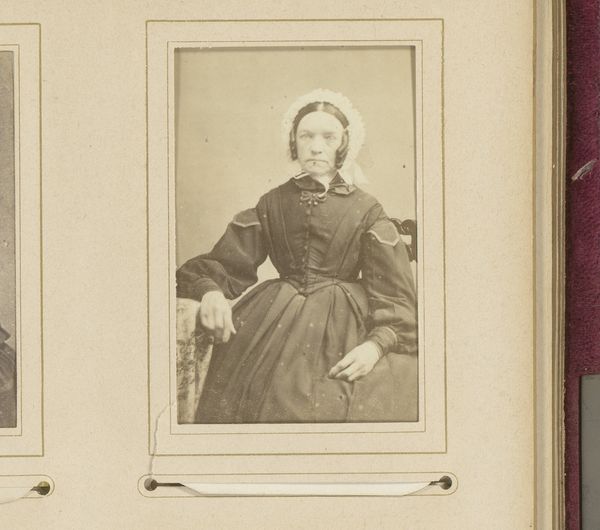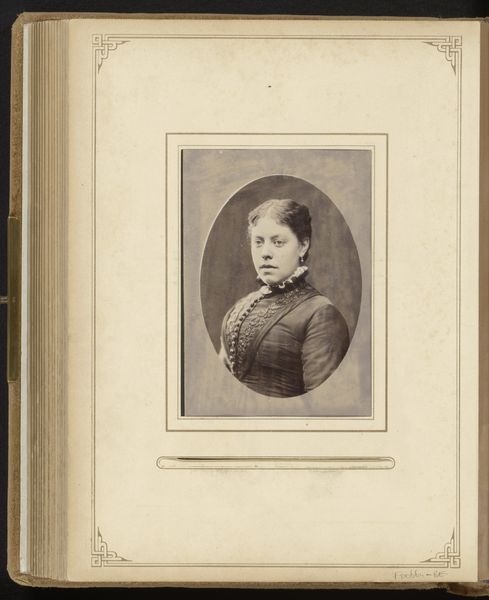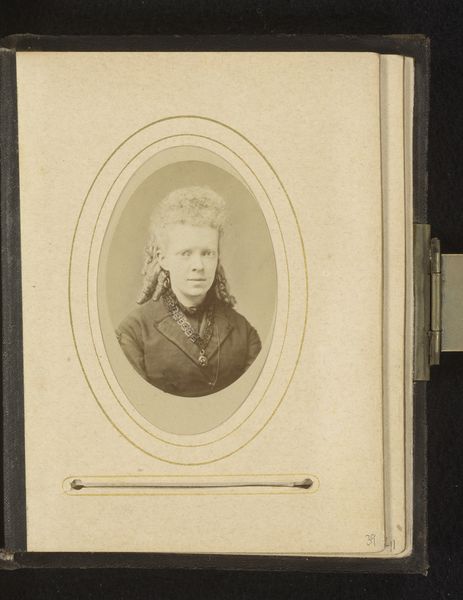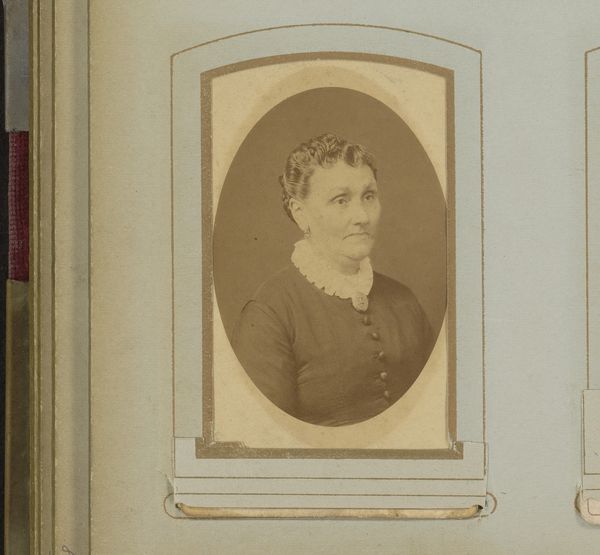
photography, gelatin-silver-print
#
portrait
#
photography
#
gelatin-silver-print
Dimensions: height 81 mm, width 50 mm
Copyright: Rijks Museum: Open Domain
Editor: We're looking at a gelatin-silver print from between 1867 and 1898, "Portret van een vrouw met ketting," or "Portrait of a Woman with Necklace," by Bernardus Gerardus ten Berge, held at the Rijksmuseum. The woman seems dignified, almost severe. What can you tell me about this piece? Curator: This portrait, presented in the constrained format of a photograph album, speaks volumes about 19th-century social expectations and the construction of identity. What does the necklace signify, would you say? Is it merely ornamentation? Or could it be a subtle marker of social standing, wealth, even perhaps, a symbol of affiliation to a particular movement or ideal? Editor: I hadn’t considered it that way. It just seemed like a pretty accessory, but thinking about social standing makes sense. Curator: Exactly! And consider the gaze: direct, unwavering. Is it empowering or confrontational? What about the restrictive clothing and hairstyle; how might those details point to a particular understanding of gender and societal roles during this period? Editor: It does seem restrictive now that you point it out, but I wonder if she felt that way at the time? Maybe that *was* empowering back then. Curator: Precisely, the notion of empowerment itself shifts across time and culture! Thinking critically about how those factors have shaped this woman's presentation offers powerful insights into how photography was used to both reflect and construct social norms. Editor: That's a good reminder that it's not about judging the past with today's values. I’ll remember to examine portraits beyond just surface appearances, too! Curator: Absolutely, art is not just what we see, but what it reveals about who we are, who we were, and the power structures that shape our lives.
Comments
No comments
Be the first to comment and join the conversation on the ultimate creative platform.
